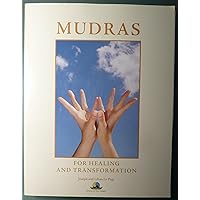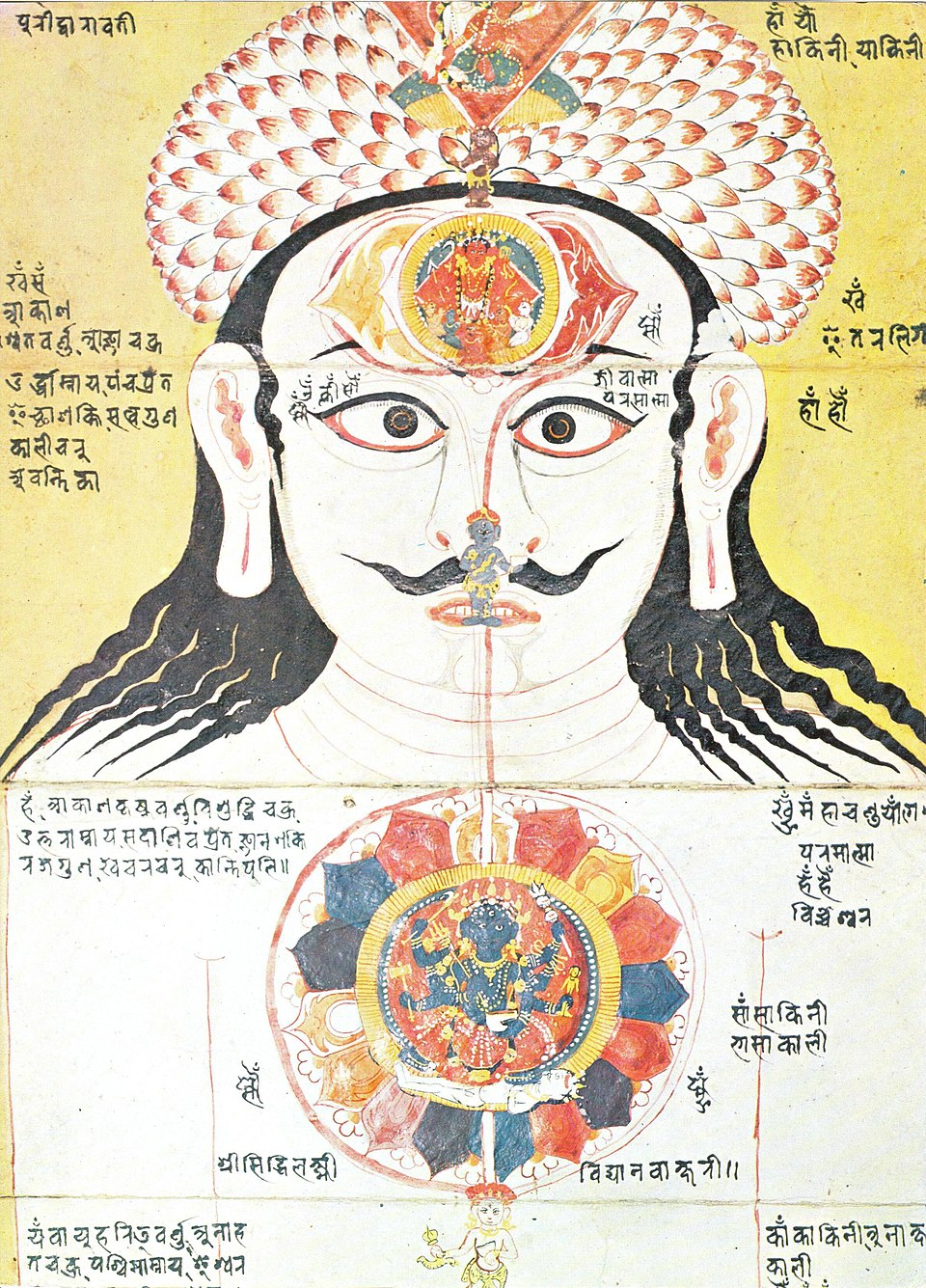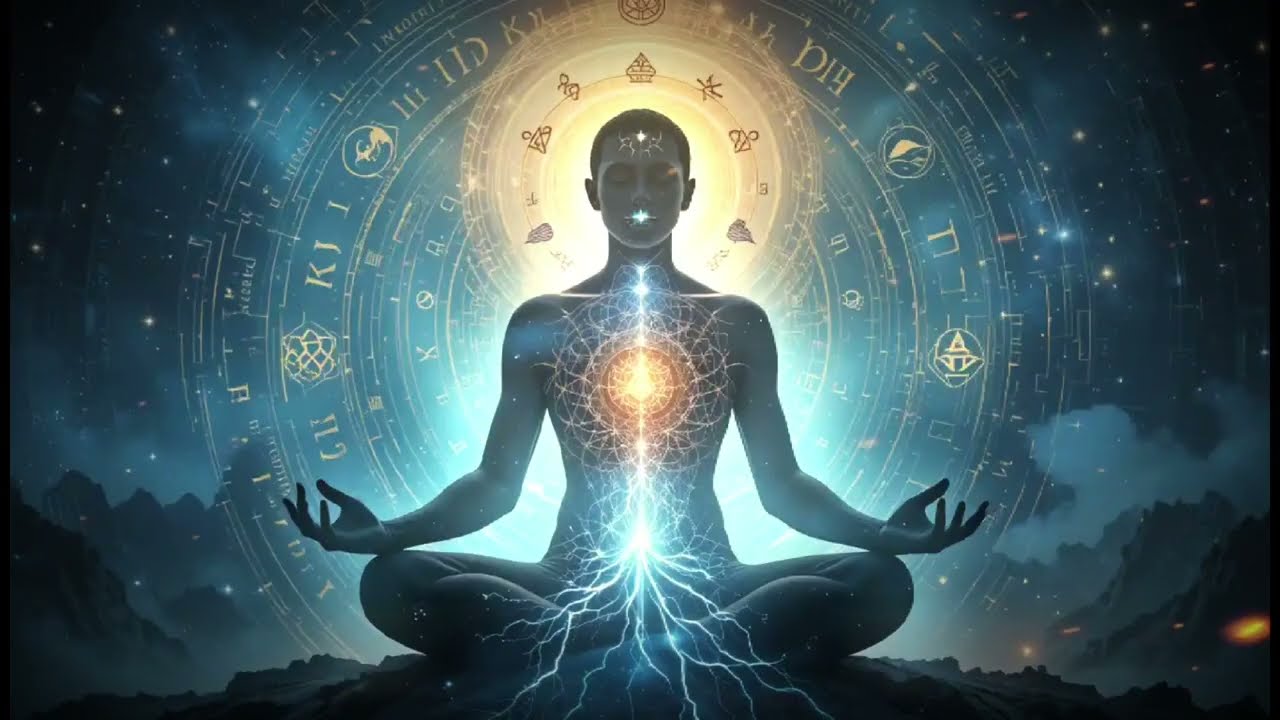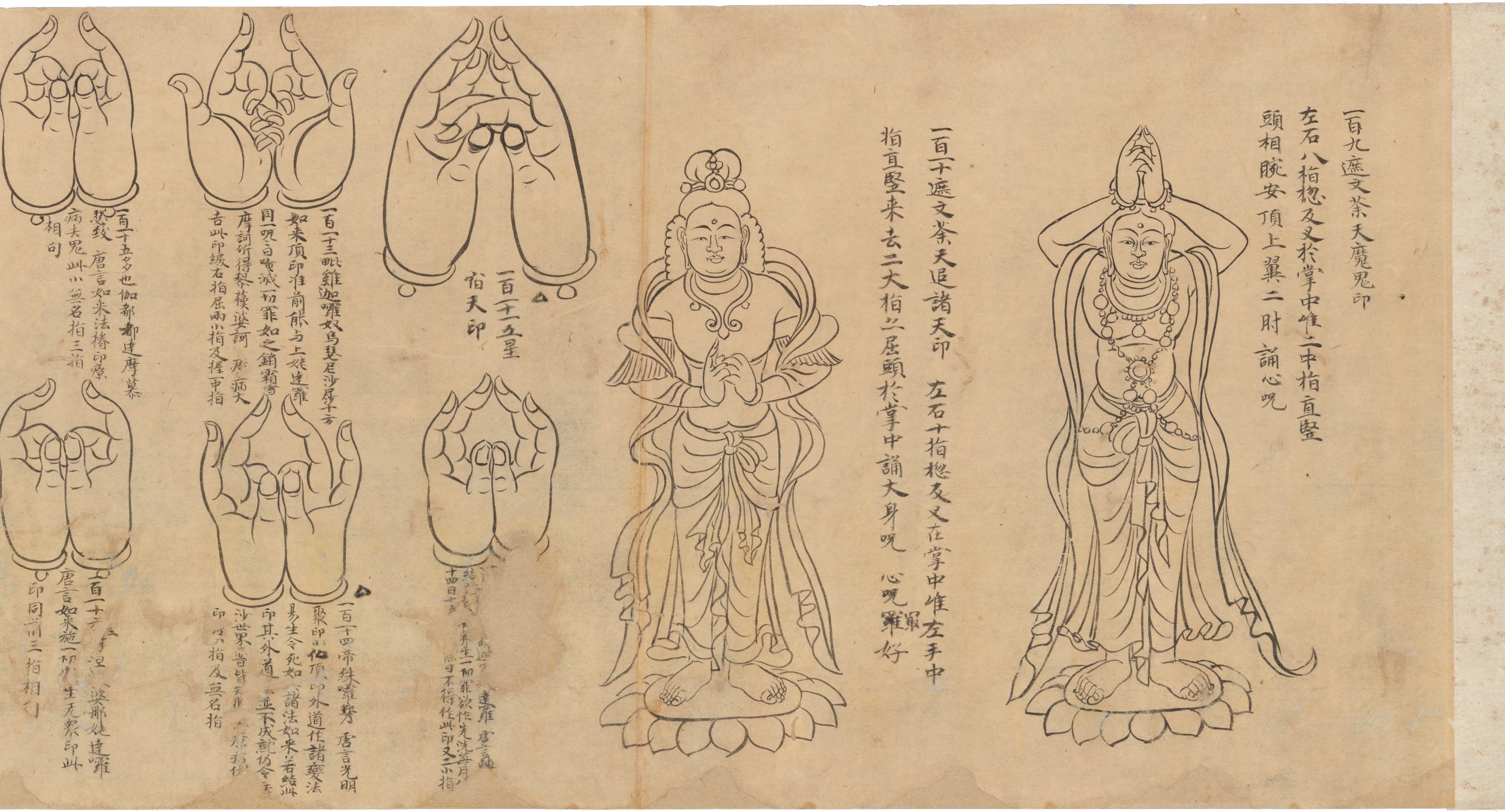Mudras, often overlooked in modern wellness practices, hold a profound and secret power that can transform physical health, mental clarity, and spiritual growth. Rooted in ancient traditions, “The Secret Power of Mudras” lies in their ability to channel energy through simple hand gestures, influencing the body’s subtle energies and promoting holistic well-being. This article delves deep into the mystical and practical aspects of mudras, revealing how they can be a hidden key to unlocking greater vitality and inner peace in everyday life.
The Origins and Evolution of Mudras

Mudras have a rich history that spans millennia, serving as a bridge between the physical and spiritual realms. This section explores how these hand gestures emerged from ancient civilizations and evolved into a powerful tool for modern practitioners. By understanding their roots, we can appreciate the secret power they hold in harmonizing the body’s energies and fostering a deeper connection to the self.
Historical Roots of Mudras in Ancient Cultures

Mudras first appeared in the Vedic texts of India, dating back over 5,000 years, where they were depicted as symbolic gestures in rituals and meditations. In Hinduism and Buddhism, mudras were not just physical poses but were believed to evoke divine energies, much like mantras or yantras. For instance, in ancient Indian scriptures like the Yoga Sutras of Patanjali, mudras are mentioned as a means to control prana, or life force, illustrating their secret power to influence the flow of energy within the body. This concept extended to Buddhism, where mudras such as the Vitarka Mudra, representing the teaching of the Buddha, were used in statues and meditations to convey enlightenment and wisdom.
As mudras spread to other cultures, they adapted and integrated into various spiritual practices. In Tibetan Buddhism, mudras became integral to tantric rituals, where specific hand positions were combined with visualizations to manifest spiritual powers. Similarly, in Chinese Taoism and Japanese Shinto, hand gestures akin to mudras were employed for healing and protection, showing a universal recognition of their secret efficacy. This cross-cultural evolution highlights how mudras were not merely symbolic but were practical tools for harnessing subtle energies, a concept that remains relevant today.
The secret power of mudras lies in their ability to activate nadis, the energy channels in the body, similar to meridians in acupuncture. Historically, practitioners believed that by holding certain mudras, one could balance the elements within the body—earth, water, fire, air, and ether—leading to physical and emotional harmony. Archaeological evidence, such as ancient cave paintings and temple carvings, depicts mudras in daily life, suggesting they were accessible to all, not just elites. This democratization of spiritual practice underscores the enduring appeal of mudras, making them a timeless method for personal transformation.
Key Figures and Texts That Popularized Mudras

Throughout history, key spiritual leaders and texts have played a pivotal role in popularizing mudras and unveiling their secret powers. Swami Vivekananda, in the late 19th century, brought mudras to the West through his lectures on yoga, emphasizing their role in achieving higher states of consciousness. He described mudras as “locks” that seal energy within the body, preventing it from dissipating and allowing for deeper meditation. Similarly, in the Hatha Yoga Pradipika, an ancient Sanskrit text, mudras are listed alongside asanas and pranayama as essential practices for kundalini awakening, revealing their secret power to stimulate dormant energies.
In more recent times, figures like B.K.S. Iyengar and Paramahansa Yogananda have incorporated mudras into their teachings, blending traditional wisdom with modern interpretations. Iyengar’s detailed descriptions in “Light on Yoga” explain how mudras can correct imbalances in the doshas (body humors) according to Ayurveda, while Yogananda’s “Autobiography of a Yogi” recounts personal experiences where mudras facilitated profound spiritual insights. These accounts not only preserve the historical essence but also adapt it to contemporary contexts, making the secret power of mudras accessible to a global audience.
The evolution of mudras also reflects societal changes, from their ritualistic use in ancient temples to their integration into therapeutic practices today. Texts like the Gheranda Samhita outline specific mudras for longevity and healing, attributing their secret power to the manipulation of marma points, similar to acupressure. By studying these figures and texts, we see how mudras have been a constant thread in human spirituality, adapting yet retaining their core ability to unlock hidden potentials within the mind and body.
The Philosophical Underpinnings of Mudra Practice

At the heart of mudra practice is a deep philosophical foundation that connects the microcosm of the hand to the macrocosm of the universe. In yogic philosophy, the hand is seen as a map of the body’s energy system, with each finger representing one of the five elements: thumb for fire, index for air, middle for ether, ring for earth, and little for water. This elemental correspondence is key to understanding the secret power of mudras, as specific gestures can balance these elements, leading to equilibrium in health and mind.
Philosophically, mudras are linked to the concept of Shiva and Shakti in Tantra, where the hands symbolize the union of masculine and feminine energies. This duality is not just metaphorical; practitioners report that holding mudras can induce states of oneness, dissolving the ego and revealing deeper truths. In Advaita Vedanta, mudras are used to transcend the illusion of separation, with their secret power lying in their ability to focus the mind and facilitate samadhi, or enlightenment.
Modern interpretations, influenced by psychology and neuroscience, build on these philosophies by suggesting that mudras activate neural pathways associated with relaxation and focus. For example, the Jnana Mudra, with the index finger touching the thumb, is said to enhance concentration by stimulating the brain’s prefrontal cortex. This blend of ancient wisdom and contemporary science underscores the timeless relevance of mudras, making them a powerful tool for anyone seeking to explore the secret dimensions of human potential.
Unraveling the Secret Power: How Mudras Affect the Body and Mind

The secret power of mudras extends far beyond their aesthetic appeal, offering tangible benefits that influence physiological and psychological states. This section delves into the mechanisms by which mudras work, drawing from ancient wisdom and emerging scientific research to explain their impact on energy flow, health, and mental clarity. By exploring these effects, readers can gain a deeper appreciation for how simple hand gestures can unlock profound changes in daily life.
The Energetic and Physiological Mechanisms of Mudras
Mudras operate on the principle of energy circulation, where specific hand positions create circuits that enhance the flow of prana, or vital energy. Physiologically, this is achieved through the pressure points on the fingers and palms, which are connected to various organs and systems via the nervous system. For instance, the Prana Mudra, formed by touching the thumb to the ring and little fingers, is believed to boost vitality by stimulating the root chakra and increasing oxygen supply to the brain. This energetic mechanism not only revitalizes the body but also addresses imbalances, such as fatigue or digestive issues, by harmonizing the autonomic nervous system.
Scientifically, studies on acupuncture and reflexology support the idea that hand pressure can influence bodily functions. Research published in journals like the Journal of Alternative and Complementary Medicine has shown that mudra-like gestures can reduce stress hormones like cortisol, demonstrating their secret power to promote relaxation. In one study, participants practicing the Dhyana Mudra reported improved heart rate variability, indicating better stress resilience. This physiological response is rooted in the activation of the parasympathetic nervous system, which fosters a state of calm and restoration, making mudras a natural antidote to modern life’s chaos.
Beyond the physical, mudras affect the subtle body, comprising nadis and chakras. Ancient texts describe how mudras seal prana within the body, preventing energy leaks and amplifying internal power. For example, the Shankh Mudra mimics the conch shell and is used to clear energy blockages, enhancing respiratory function and mental focus. This holistic approach underscores the secret power of mudras to integrate body, mind, and spirit, offering a comprehensive path to wellness that is both accessible and profound.
Psychological and Emotional Benefits of Regular Mudra Practice
On an emotional level, mudras serve as a powerful tool for managing moods and fostering mental resilience. The act of holding a mudra creates a feedback loop between the body and mind, where physical posture influences emotional states. Thebody’s somatic experiences can significantly affect emotional well-being, and mudras serve as a bridge between these realms. When we engage in mudra practice, we invite a conscious awareness of our internal state, which can lead to greater emotional regulation.
Engaging the Mind through Mudras
Mudras act not only as physical gestures but as catalysts for mindfulness that help practitioners anchor their thoughts and feelings. For instance, the Anjali Mudra, where palms are brought together at the heart center, encourages introspection and gratitude. This simple posture invites a moment of pause, allowing individuals to reconnect with their intentions or personal affirmations.
Furthermore, studies have shown that mindfulness practices, including mudra work, activate brain regions associated with empathy and emotional processing. When practicing mudras regularly, individuals often report feeling more centered and balanced, leading to improved relationships and social interactions. The psychological mechanism behind this effect can be traced back to increased self-awareness, as engaging with mudras fosters a deeper understanding of one’s emotions and reactions.
Additionally, mudras can also serve as a form of self-soothing during times of stress or anxiety. Holding specific hand positions creates a tangible sense of control and comfort—a grounding exercise in chaotic moments. For example, the Gyan Mudra is known for promoting calmness and mental clarity, making it an effective tool for those facing high-pressure situations such as public speaking or exams.
The cumulative effects of regular mudra practice can lead to enhanced emotional resilience over time. By developing a consistent routine of incorporating mudras into daily life, individuals can equip themselves with a powerful resource for navigating emotional turbulence. This nuanced relationship between body language and emotional health amplifies the secret power of mudras, highlighting their potential to transform our inner landscape.
Enhancing Focus and Concentration with Mudras
One of the profound benefits of mudra practice is its ability to enhance focus and concentration—a necessity in our fast-paced, distraction-filled modern world. The strategic placement of fingers in specific mudras directs the mind’s energy toward heightened cognitive function and alertness. This is particularly evident in the Jnana Mudra, where the index finger touches the thumb, symbolizing the union of knowledge (Jnana) and consciousness (Chitta).
Research suggests that engaging in mudra practice can stimulate neural pathways connected to attention and focus. For example, studies have indicated that individuals who incorporate mudras while meditating experience longer periods of sustained focus compared to those who do not. By consciously integrating these gestures into meditation or study sessions, practitioners may find it easier to maintain prolonged concentration and resist distractions.
Moreover, mudras serve as a gentle reminder to return to the present moment. As individuals engage with their hands, they cultivate a tactile connection that pulls them away from wandering thoughts and anxieties. This sensory engagement creates a meditative quality conducive to deep focus.
In educational contexts, students who practice mudras before exams or during study sessions may find that their retention and recall improve, thereby reflecting the broader implications of the secret power of mudras in academic performance. Such findings underscore how these ancient techniques can adapt to contemporary challenges, offering practical solutions for modern learners seeking to optimize their cognitive capabilities.
Cultivating Spiritual Awareness through Mudras
Beyond the physiological and psychological dimensions, mudras hold a significant place in spiritual practices. They act as sacred symbols, representing various aspects of divinity and consciousness. Engaging in mudra practice cultivates a refined sensitivity to the spiritual energies around us, deepening our connection to the universe and facilitating experiential insights.
Connecting with Spiritual Energies
Each mudra possesses unique vibrational frequencies that resonate with different aspects of spiritual energy. For instance, the Surya Mudra, formed by bending the ring finger and placing the thumb on top, is thought to connect practitioners with the Sun’s energy, promoting vitality and illuminating the mind’s shadowy corners. This gesture not only enhances physical energy but also aligns with spiritual awakening, helping individuals tap into higher states of consciousness.
Much like mantras, mudras can amplify the effects of meditation and prayer. When combined with intention, these gestures become potent instruments for manifesting desires and intentions. Practitioners often report that holding mudras during meditation enhances their ability to visualize and embody spiritual aspirations, whether that be peace, love, or enlightenment.
Additionally, mudras can facilitate a sense of surrender and trust in the divine. The Bhairava Mudra—characterized by interlacing the fingers, palms facing upward—symbolizes open receptivity, inviting blessings and spiritual guidance. Through this practice, individuals find a space to release resistance and allow grace to flow into their lives.
By incorporating mudras into spiritual routines, practitioners may uncover layers of insight and wisdom that are otherwise obscured in the hustle of everyday life. The secret power of mudras in nurturing spiritual awareness speaks to their timeless relevance, providing a pathway for individuals to explore the depths of their existence.
Conclusion

The exploration of mudras reveals their multifaceted nature and profound secret powers that transcend mere physical gestures. Rooted in ancient philosophies, mudras embody energetic, psychological, and spiritual dimensions, offering tools for enhancing health, managing emotions, sharpening focus, and deepening spiritual awareness.
As we delve into the rich tapestry of hand gestures, we realize that the true essence of mudras lies in their ability to harmonize the intricate connections between body and mind, individual and universe. Their adaptability to contemporary life further highlights their timeless relevance, inviting us to integrate these sacred practices into our daily routines. Through consistent engagement with mudras, we unlock hidden potentials within ourselves, traversing the vast landscapes of consciousness and cultivating a life imbued with balance, purpose, and deeper meaning.

GIPHY App Key not set. Please check settings